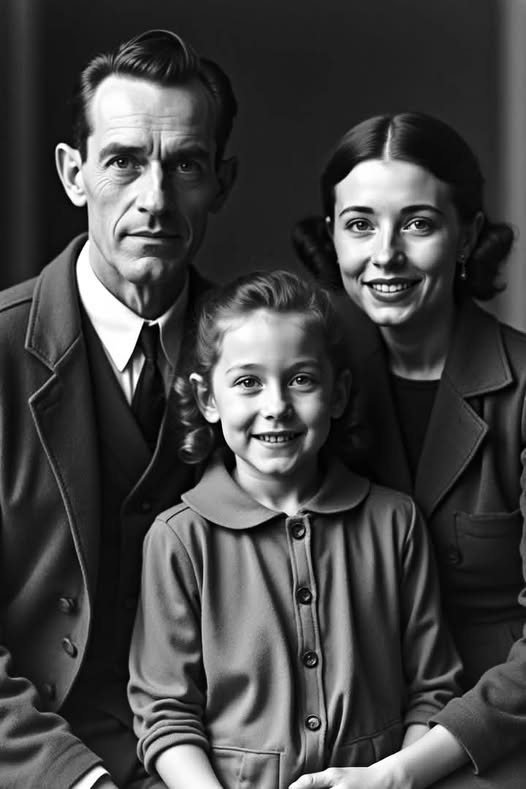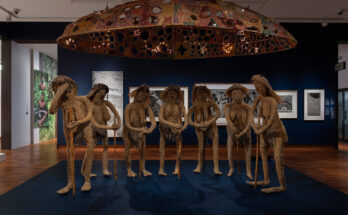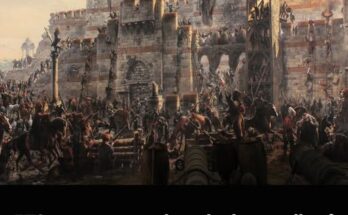
In the heart of Oosterwolde, a quiet village in the Netherlands, a child was born into a world that seemed, at the time, ordinary and full of promise. Her name was Sophia Kaatje van Hasselt, and her birth on April 20, 1933, marked the beginning of a life that, though tragically short, would become a symbol of untold suffering, innocence lost, and the cruelty of a world gripped by hatred. Alongside her parents Simon and Geertje van Hasselt, and her older sister Hermi, Sophia’s life was caught in the sweeping tide of the Holocaust—a genocide that claimed six million Jewish lives, and among them, the light of this young girl.
Sophia never had the chance to grow up, to fall in love, to travel, or to fulfill the promise of her early years. In February 1943, she and her entire family were deported to Auschwitz, one of the most notorious Nazi concentration and extermination camps. They would never return.
This essay is not only a memorial for Sophia and her family, but also an attempt to bear witness—to explore how a single life, extinguished so early, still has the power to move us, to teach us, and to remind us of the importance of memory, compassion, and humanity.
I. The World into Which Sophia Was Born
To understand Sophia’s life, it is essential to understand the world into which she was born. The year 1933 was a pivotal moment in world history. While the Netherlands remained a relatively peaceful and tolerant country, Europe was already trembling under the rise of Adolf Hitler, who came to power in Germany that same year. Anti-Semitism, long a poison in European history, was rapidly being institutionalized and weaponized into a political ideology of destruction.
Sophia was born into a Dutch Jewish family, a small and tight-knit community in Oosterwolde. Her father Simon and mother Geertje were likely of modest means—ordinary people working, raising their children, and living in a multicultural Netherlands that, before the war, offered more safety to Jews than many other countries in Europe.
The Jewish community in the Netherlands, before the war, was vibrant and deeply rooted. Dutch Jews participated fully in national life while maintaining their religious and cultural traditions. Families like the van Hasselts would have celebrated Jewish holidays, spoken Dutch and possibly some Yiddish or Hebrew, and enjoyed a close-knit extended family and community life.
Sophia’s older sister Hermi would have been her first playmate and companion—sharing toys, laughter, stories, and perhaps attending school or religious lessons together. One can imagine their home filled with warmth, the scent of home-cooked meals, and the gentle cadence of family life—meals shared, stories told, and dreams nurtured.
But all of this was about to change.
II. The Clouds Gather: Nazi Occupation and Anti-Jewish Laws
The German invasion of the Netherlands in May 1940 changed everything for the van Hasselt family and for all Dutch Jews. The Nazi occupation brought with it the systematic implementation of anti-Jewish laws designed to isolate, impoverish, and ultimately destroy the Jewish population.
At first, these laws might have seemed like inconveniences—Jews were banned from certain professions, had to register their businesses, and were increasingly excluded from public life. But soon, the noose tightened. Jewish children were expelled from public schools. Families were forced to wear the yellow Star of David on their clothing. Public humiliation, violence, and economic destruction followed.
Sophia, only seven years old when the Nazis invaded, would have experienced this terror not through newspapers or politics, but through what she saw, heard, and felt: her parents’ worry, the whispered conversations at night, the abrupt absence of friends, the sense of being marked and different. She may have asked why she could no longer go to school or play in the park, why neighbors who once smiled now looked away, or why soldiers marched through their streets with guns and dogs.
Her parents, Simon and Geertje, must have struggled to maintain a sense of normalcy. Like so many Jewish parents during this time, they likely tried to shield their children from the full horror of what was coming. But how does one protect a child from a force as cruel and relentless as genocide?
III. The Arrest and Deportation
In February 1943, when Sophia was just nine years old, the inevitable came. Along with her parents and sister, she was rounded up and deported. By that time, the Nazis had already begun mass deportations of Jews from the Netherlands to concentration and extermination camps in the east—primarily Auschwitz, located in occupied Poland.
The journey from the Netherlands to Auschwitz was brutal. Deported Jews were crammed into cattle cars, often for days without food, water, or basic sanitation. Children cried in the darkness, separated from familiar comforts, surrounded by fear and illness. Sophia, small and fragile, was just a child. She could not have understood the full meaning of what was happening, only that she was taken from her home, her belongings, her safety—dragged into a journey of terror.
It is almost certain that upon arrival at Auschwitz, Sophia and her family were sent directly to the gas chambers. Few children survived selection, and even fewer lived through the ordeal of camp life. The Nazis saw no use for children—they could not work, and their cries undermined the façade of civility the regime sometimes tried to maintain. Sophia, like countless others, was murdered simply for being Jewish.
IV. A Lost Future
What might Sophia have become? A doctor, a teacher, a writer, a scientist? Might she have fallen in love, raised children of her own, contributed to art, science, or public life? Might she have told her own story, had she lived?
These questions haunt every life lost in the Holocaust, but they are especially piercing when we consider children. A child like Sophia did not die because of anything she did, said, or believed. She died because of a system that viewed her not as a person, but as a problem to be solved—an “enemy” to be eradicated. The loss of Sophia is not just the loss of one girl; it is the loss of generations that might have followed.
There are no known writings, recordings, or personal artifacts left from Sophia’s life. We do not know her favorite color, her dreams, or whether she liked to read or draw or sing. All we have is her name, her date of birth, and the chilling finality of her deportation.
But perhaps even that is enough—because remembering her name is a form of resistance. Speaking her name out loud is a defiance of the forces that tried to erase her. Sophia Kaatje van Hasselt. She lived. She mattered. She is remembered.
V. Remembering in a World That Forgets
In a world often eager to move on, to bury pain under statistics and memorial plaques, the story of one child can feel like a whisper in a storm. But Sophia’s story is not isolated. It is one thread in the vast, painful tapestry of the Holocaust—a genocide that targeted millions for who they were.
Her life represents not just the six million Jewish victims, but also the more than 1.5 million children who were murdered. The sheer scale of the Holocaust can numb us to the individual tragedies it contains. That is why it is crucial to focus on stories like Sophia’s—because behind every number is a name, a face, a family, and a future stolen.
In the Netherlands, efforts have been made to preserve the memory of Jewish victims. The Hollandsche Schouwburg, the Dutch Holocaust Memorial of Names, and the Digital Monument to the Jewish Community in the Netherlands all work to ensure that names like Sophia’s are not lost. Her inclusion in these records is a small but powerful gesture of remembrance.
Today, in Keystone, South Dakota, in Jerusalem, in Amsterdam, in Berlin, and across the world, children play in parks, go to school, and live in freedom. But this freedom was paid for by the suffering of others. The memory of Sophia asks us to protect that freedom, to stand against hate in all its forms, and to ensure that no child ever again has to face what she did.
VI. Why Memory Matters
Some might ask: why focus on one child, when so many died? Why look back, when we live in the now?
Because memory is not about the past—it’s about who we choose to be today. When we remember Sophia, we affirm the value of every human life. We acknowledge the devastating consequences of bigotry, racism, and silence. And we take up the moral responsibility to speak, to act, and to care.
Sophia Kaatje van Hasselt had no voice in history. She left no legacy of words or deeds. But in remembering her, we give her voice. We make her life matter again.
Every time her story is told, she lives a little longer. Every candle lit in her name rekindles the light that hatred tried to extinguish. She was not just a victim—she was a daughter, a sister, a human being.
VII. A Final Word
It is difficult to write about Sophia without weeping. She was one of many, and yet she was singular. In her short life, she knew joy, fear, family, and then unimaginable suffering. Her memory, and the memory of her parents and sister, must be more than a page in history. It must be a call to conscience.
Let us remember:
Sophia Kaatje van Hasselt, born April 20, 1933, in Oosterwolde.
Deported in February 1943, to Auschwitz.
Murdered, along with her parents Simon and Geertje, and her sister Hermi.
She was 9 years old.


